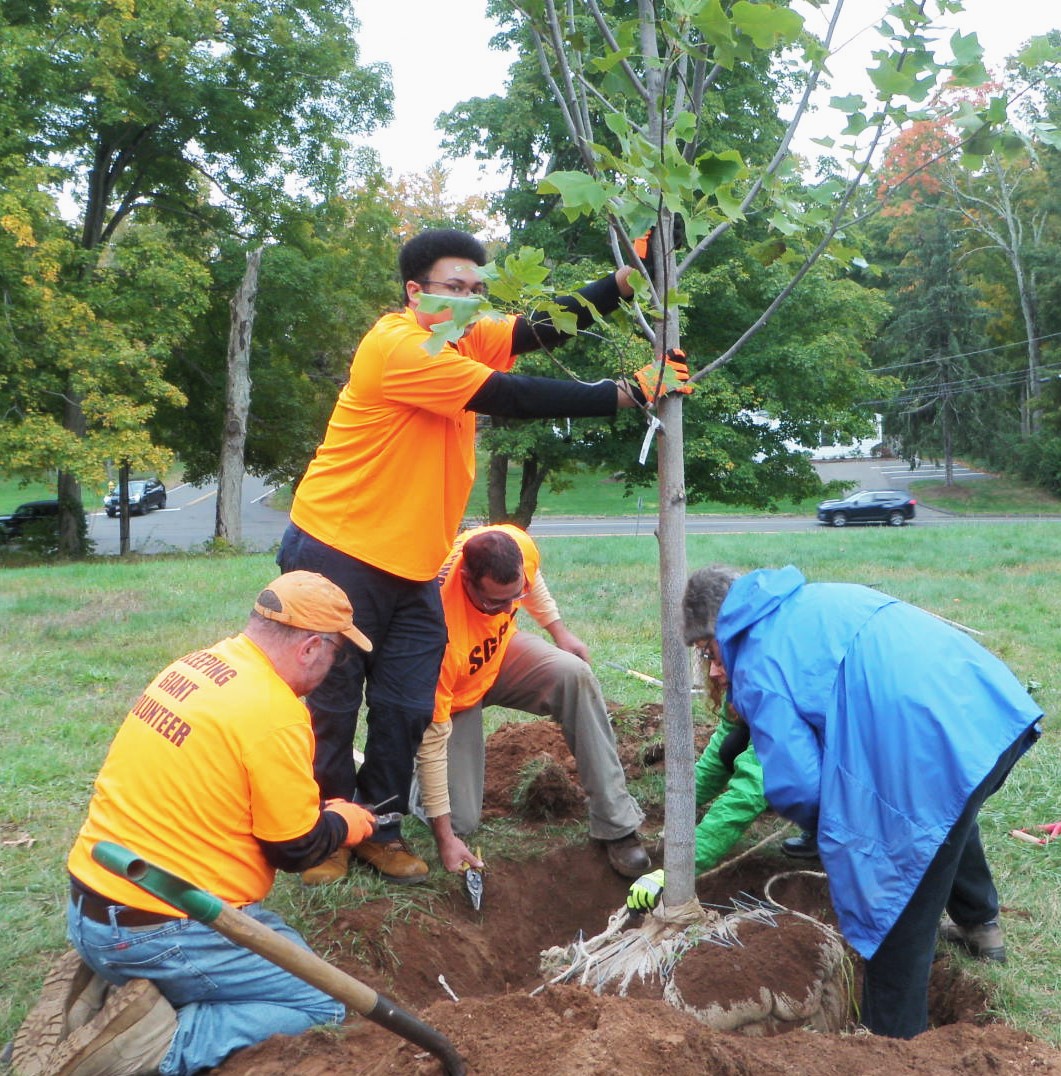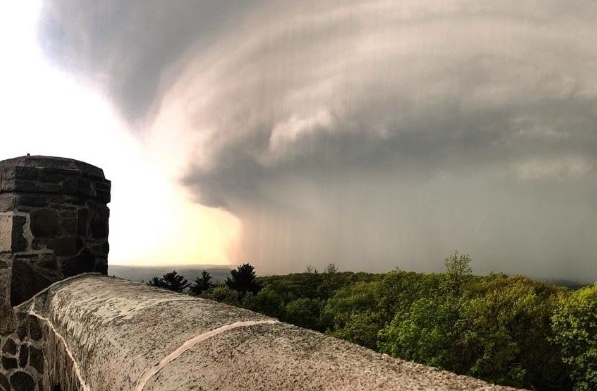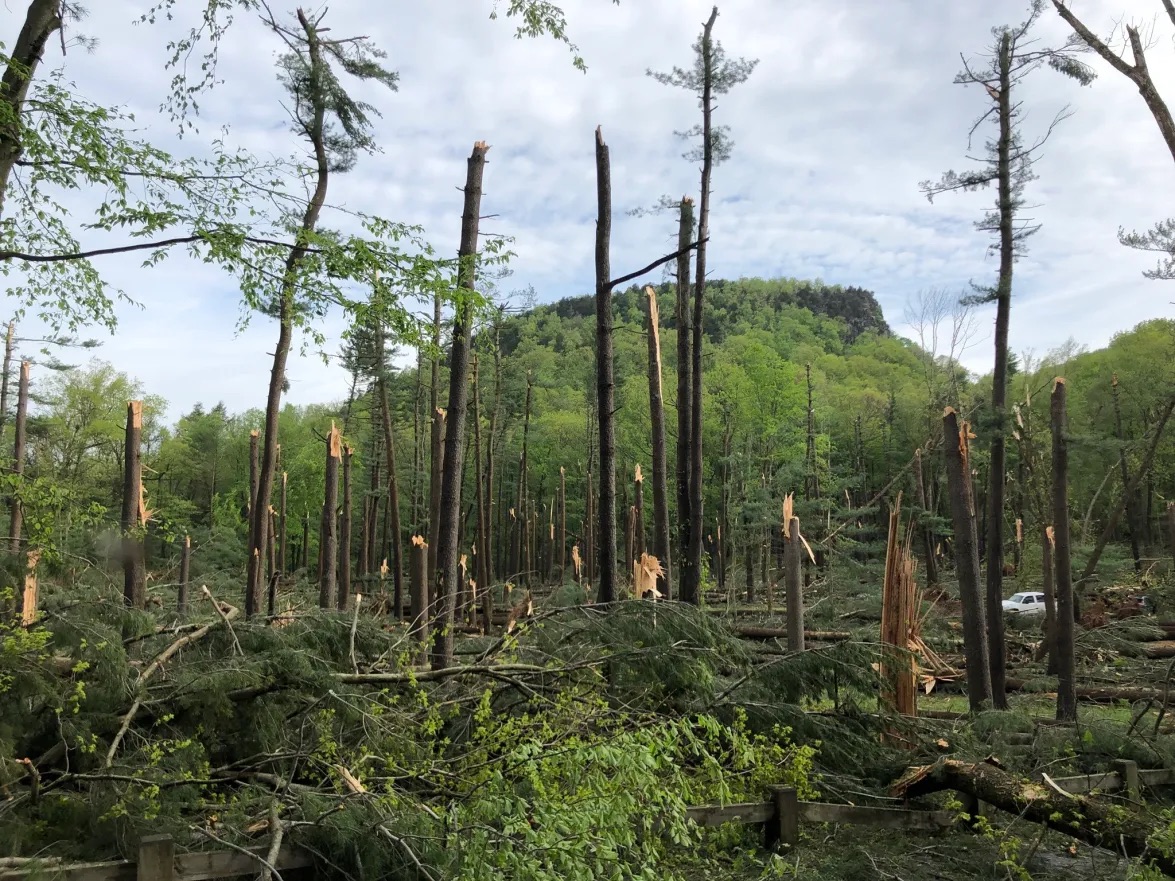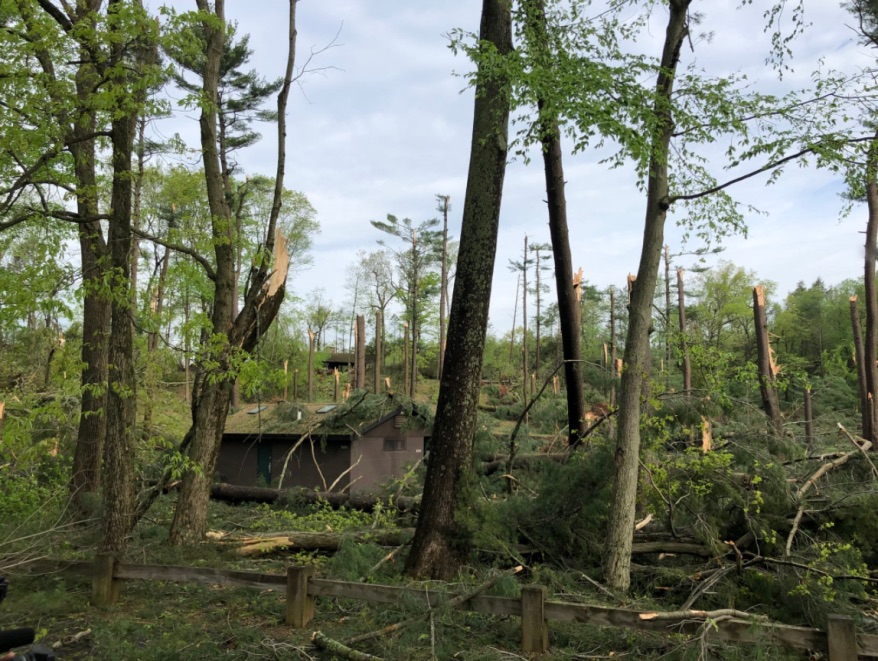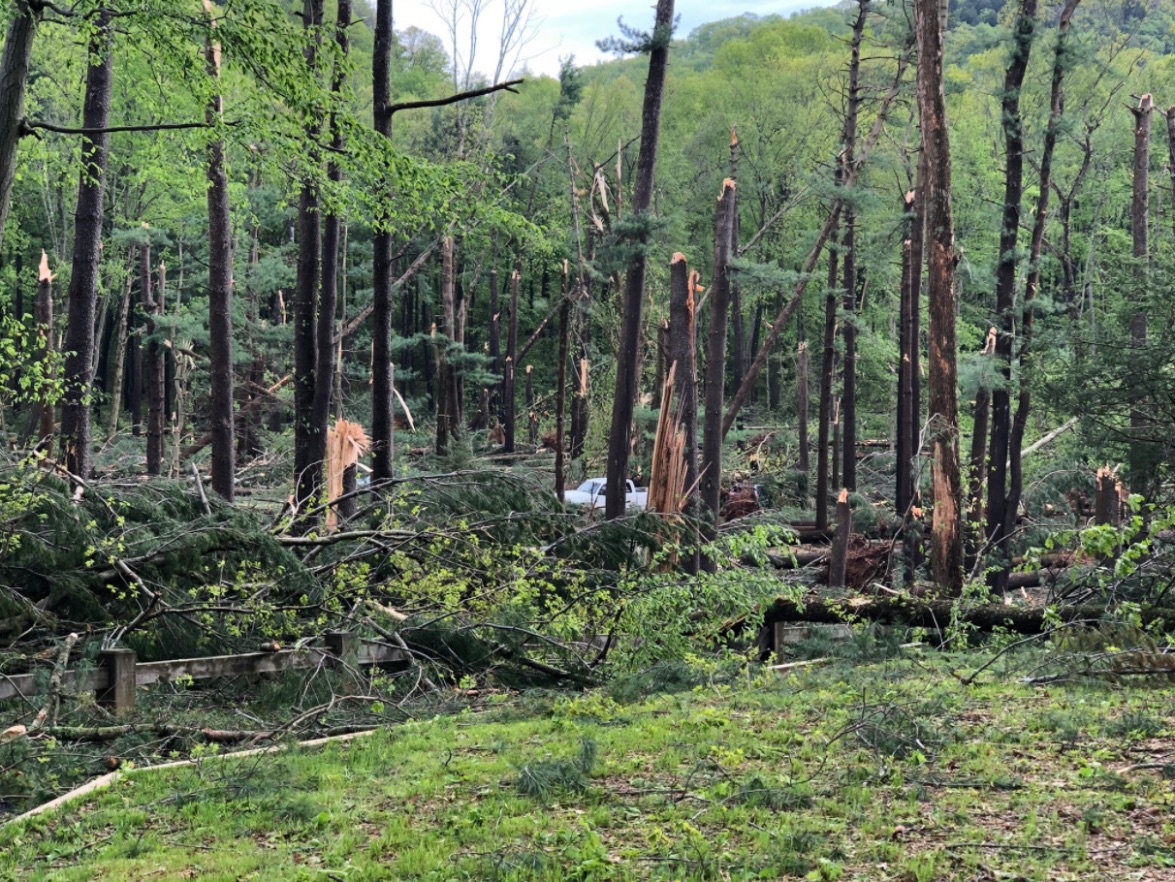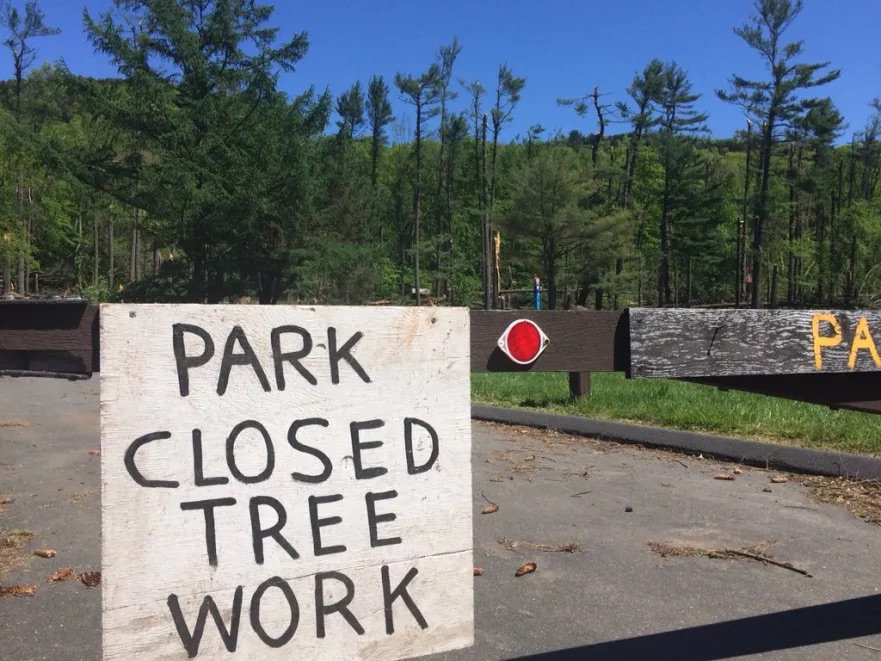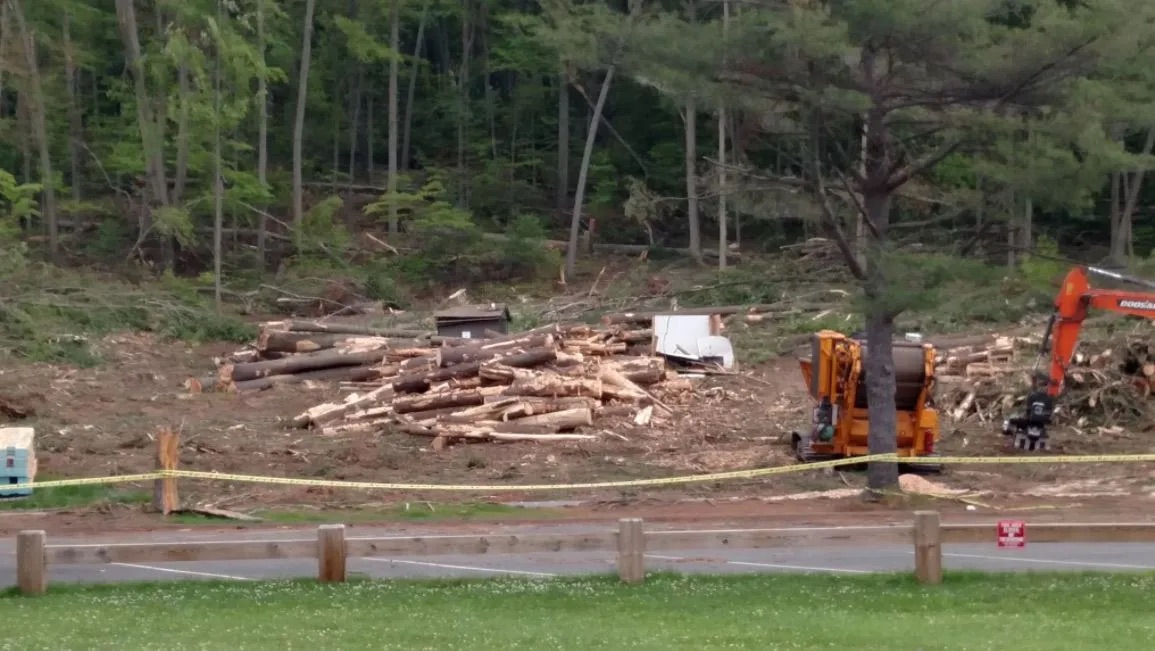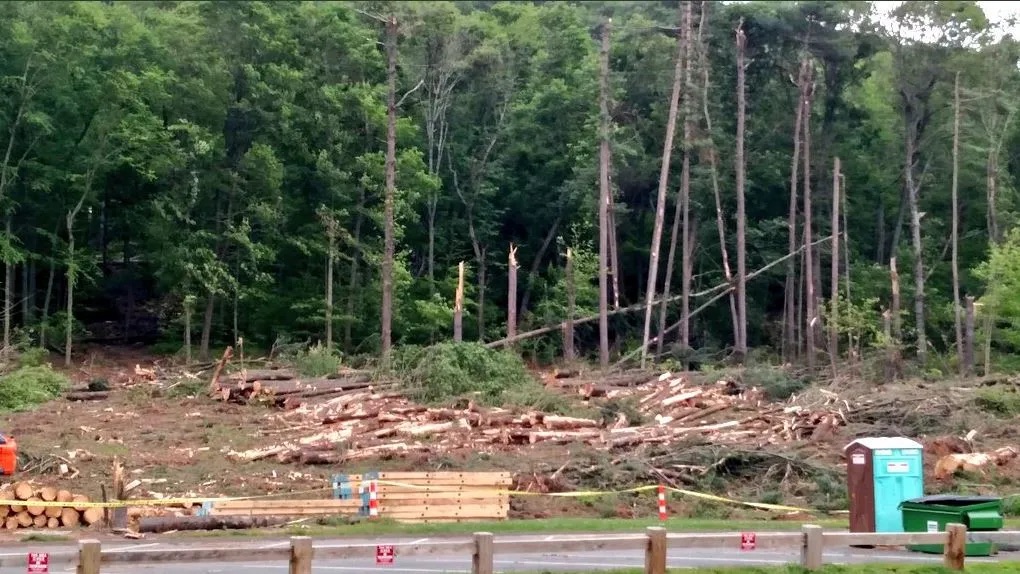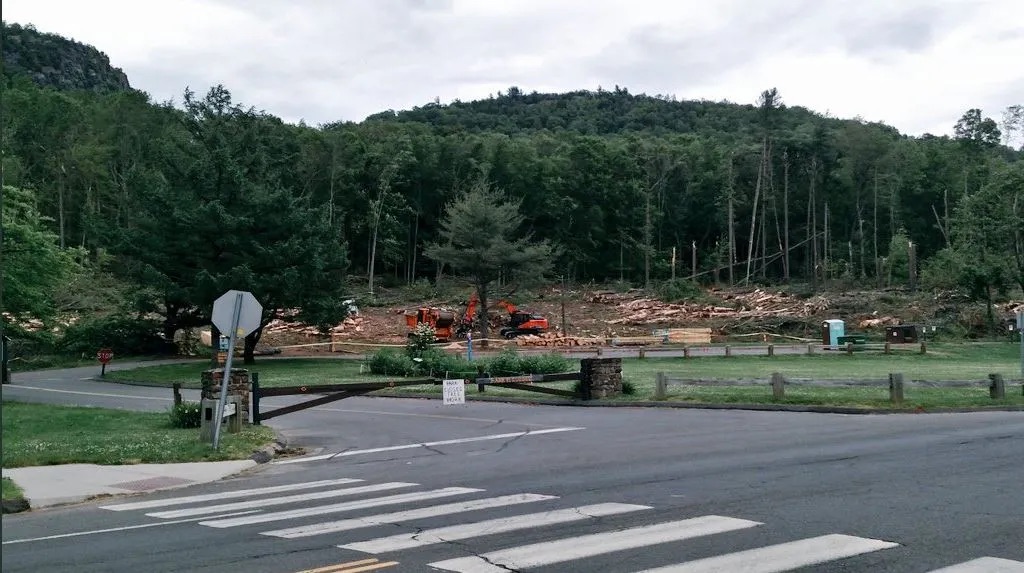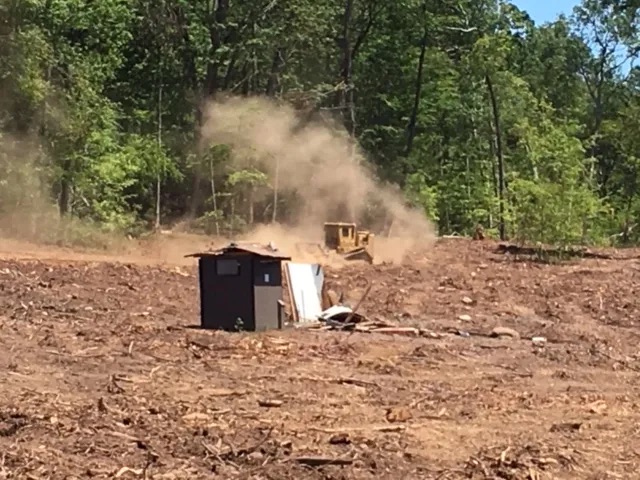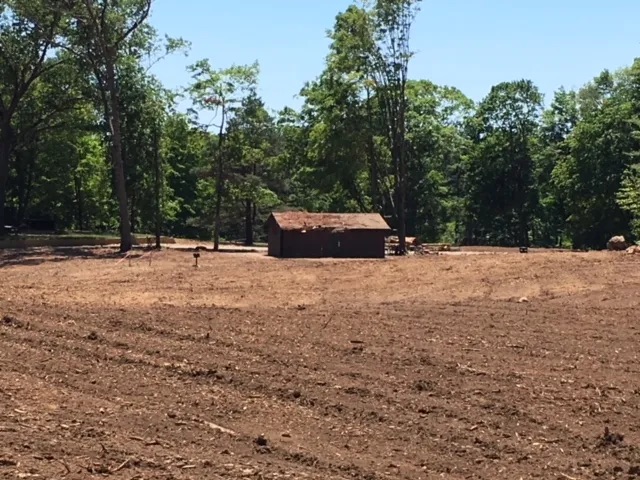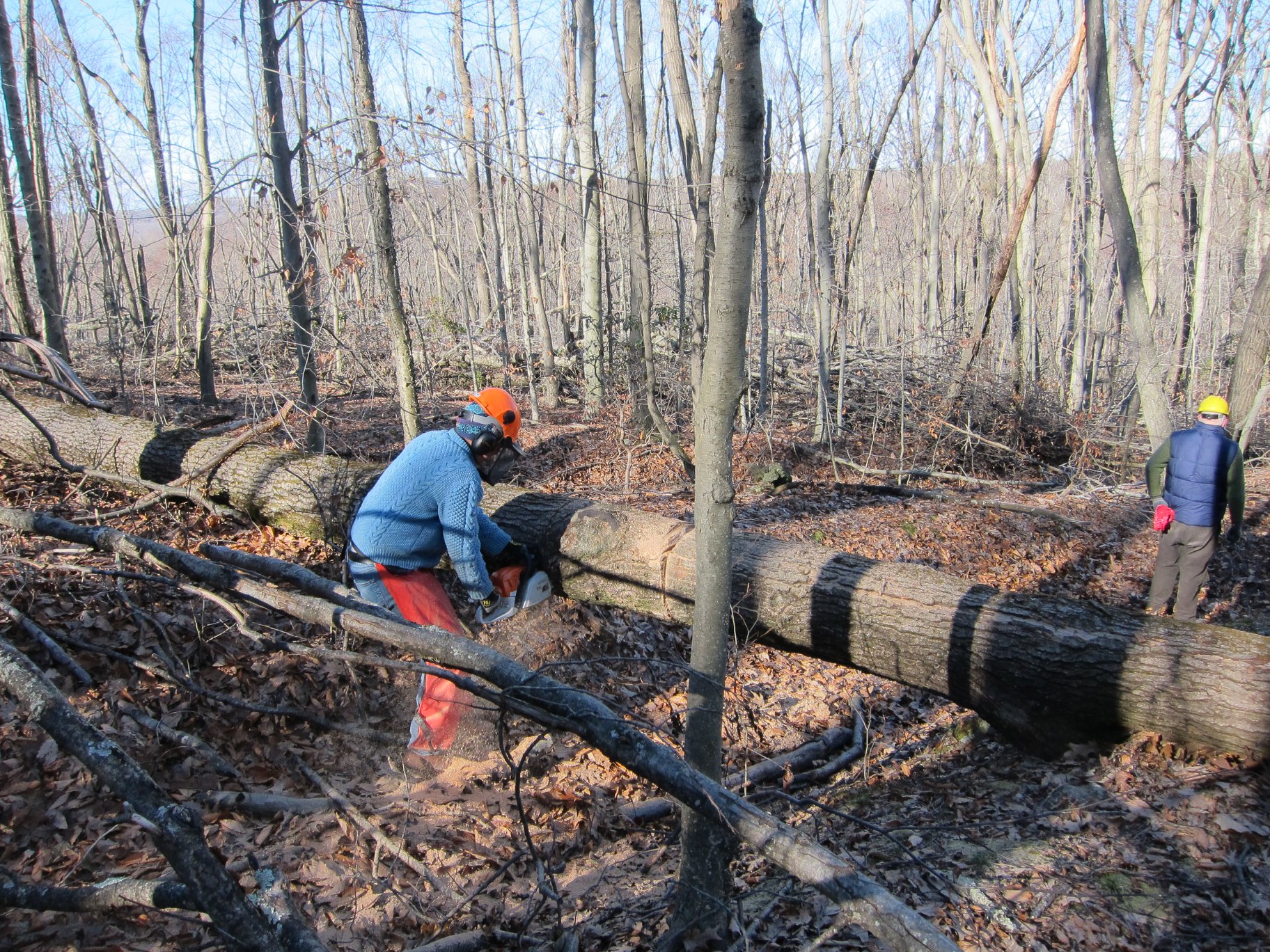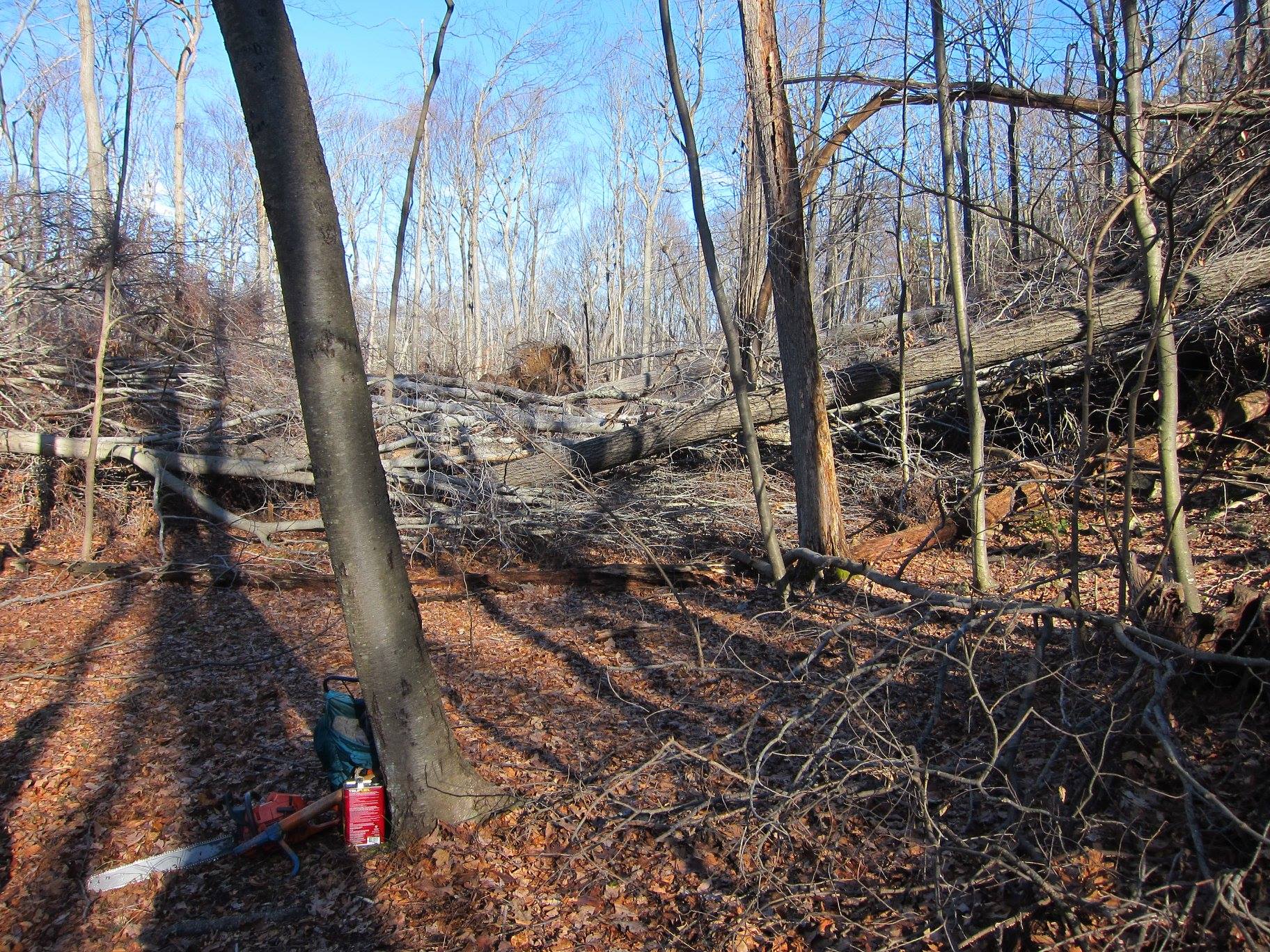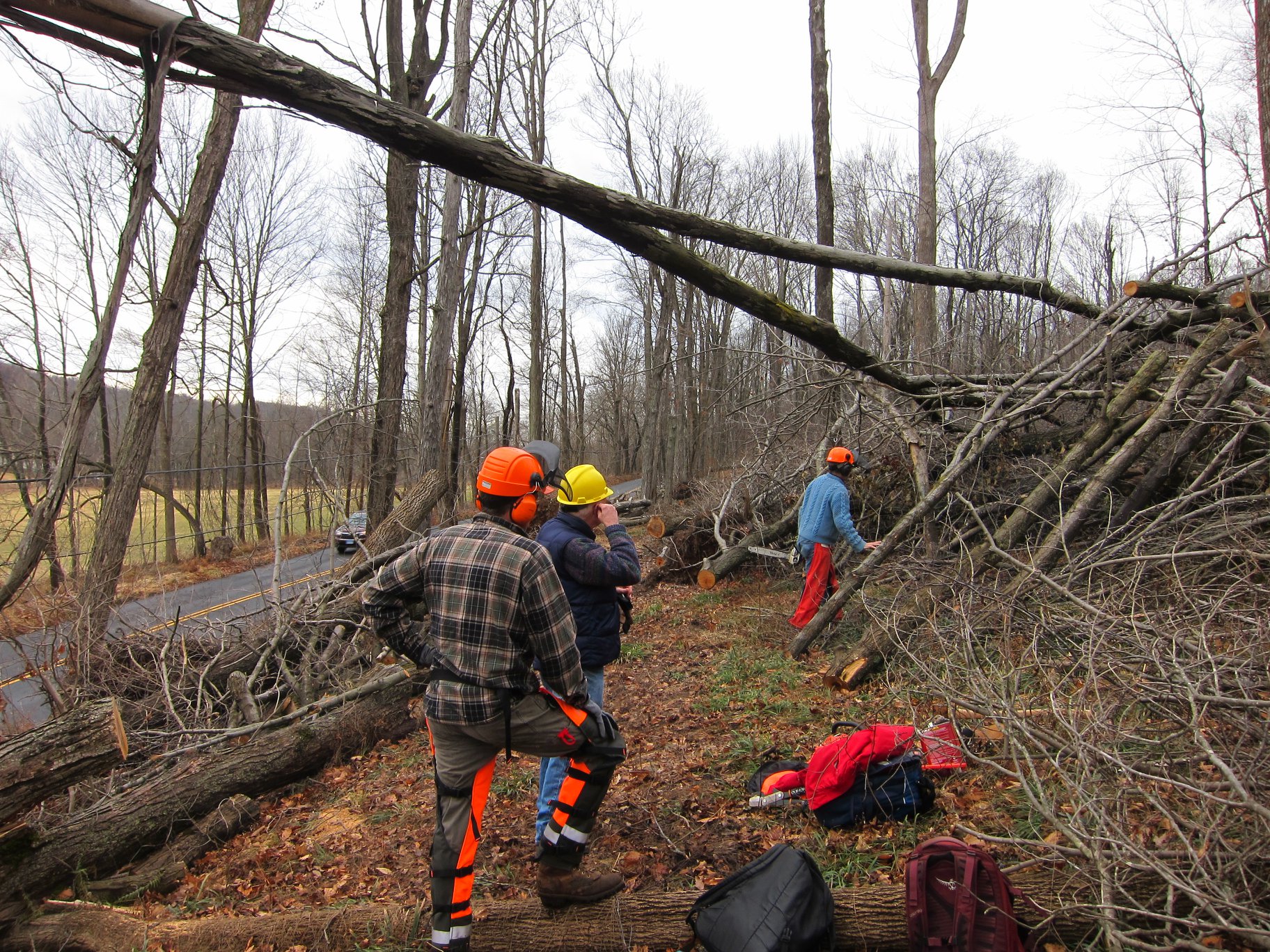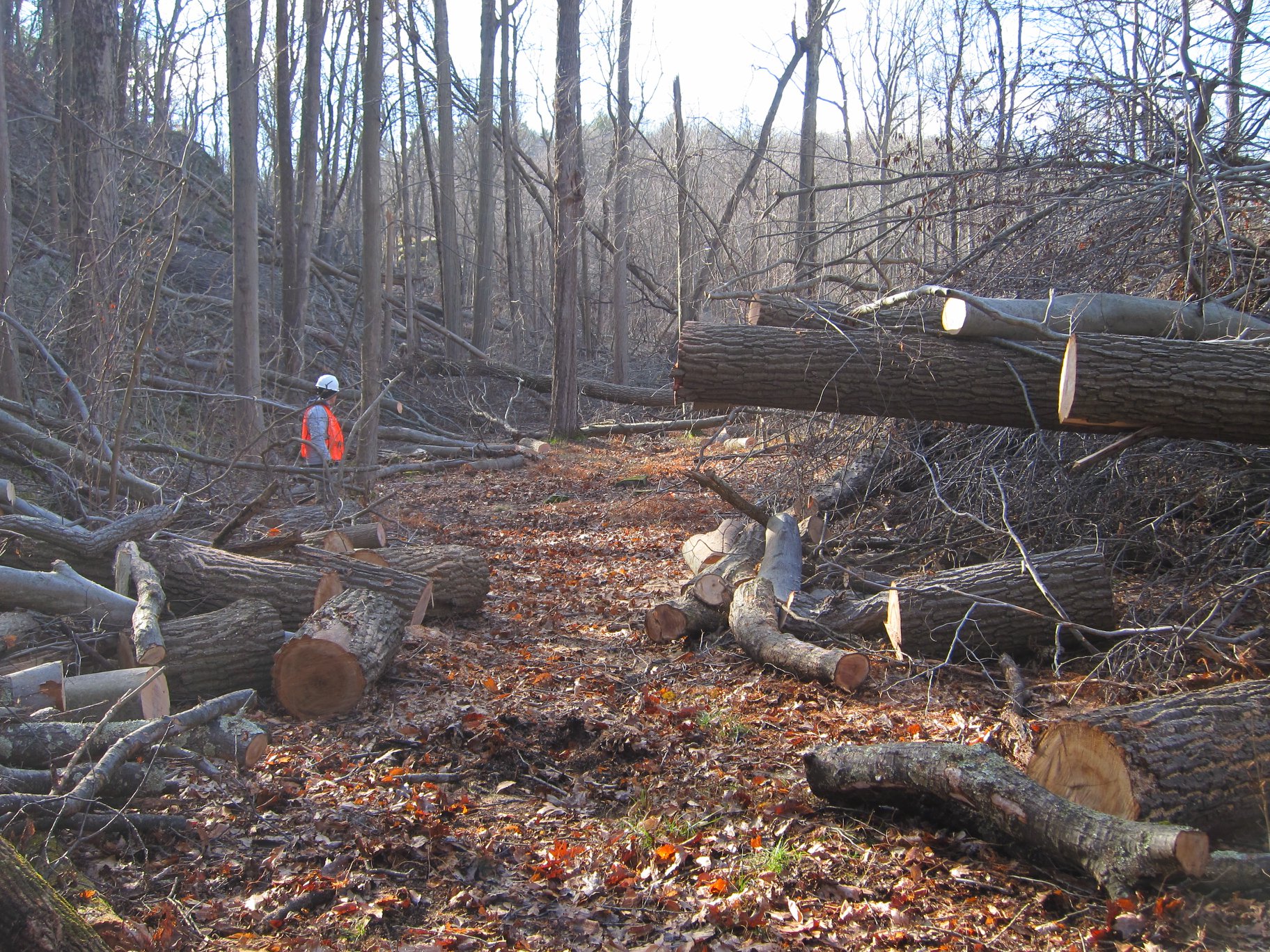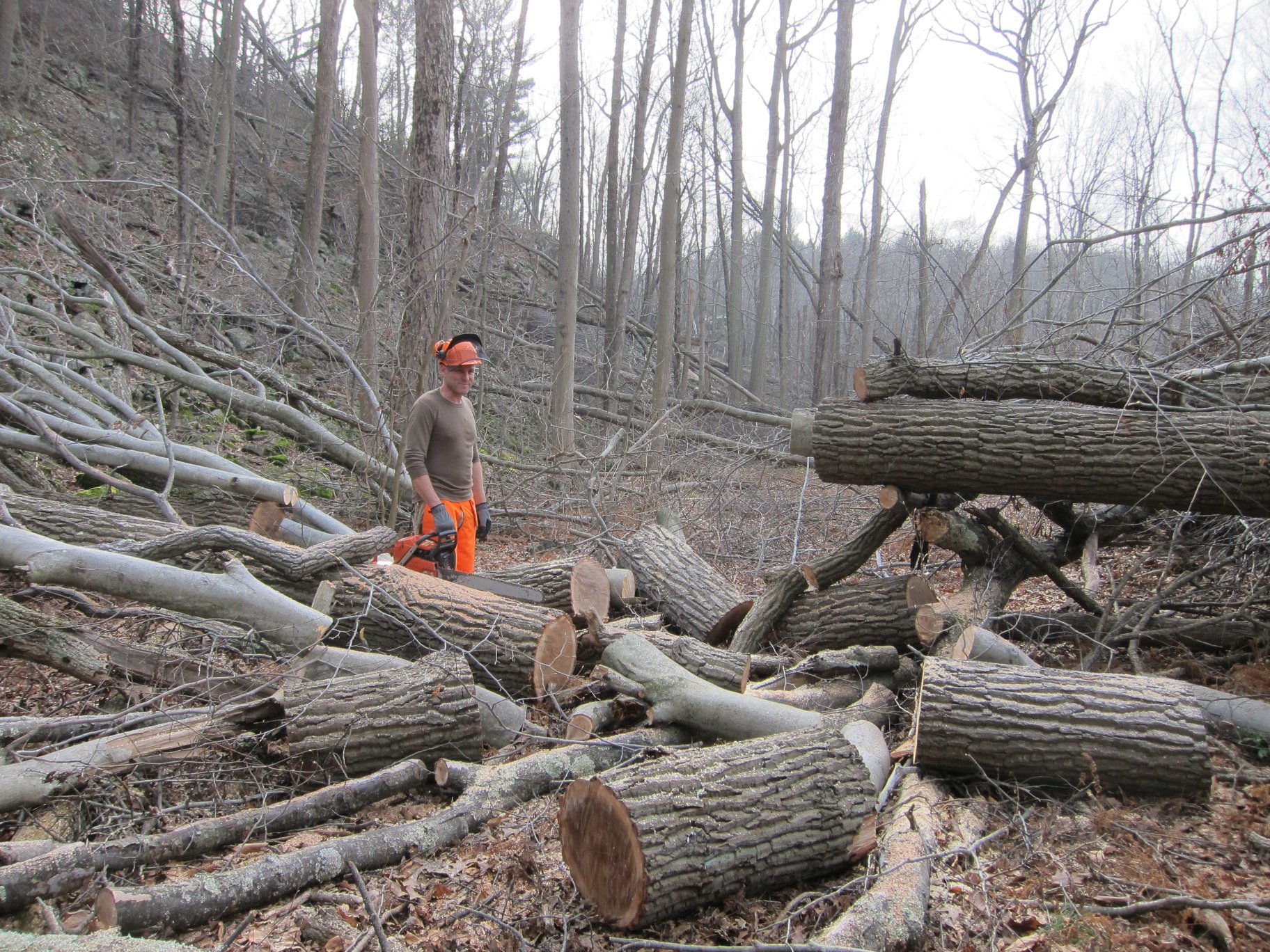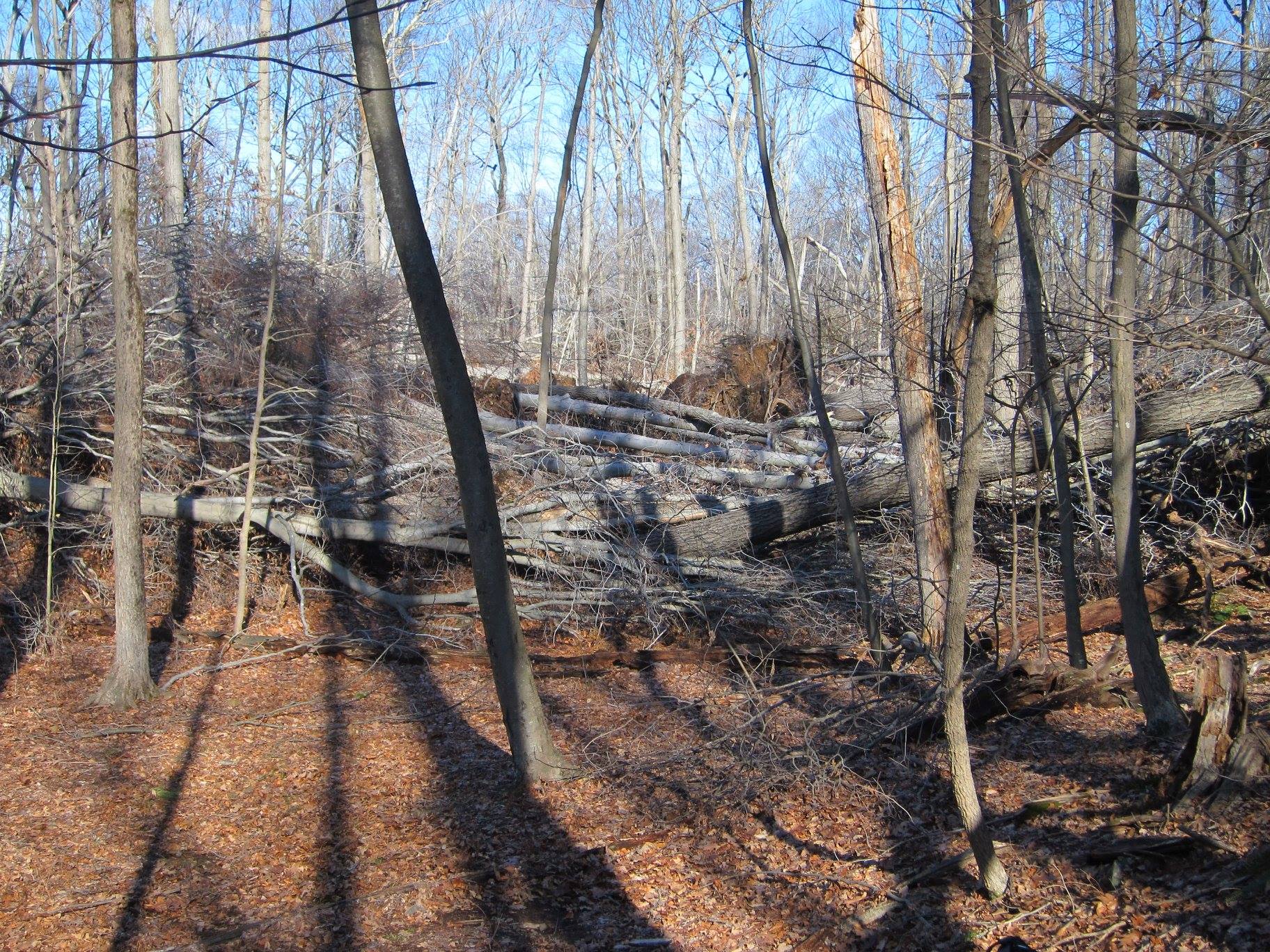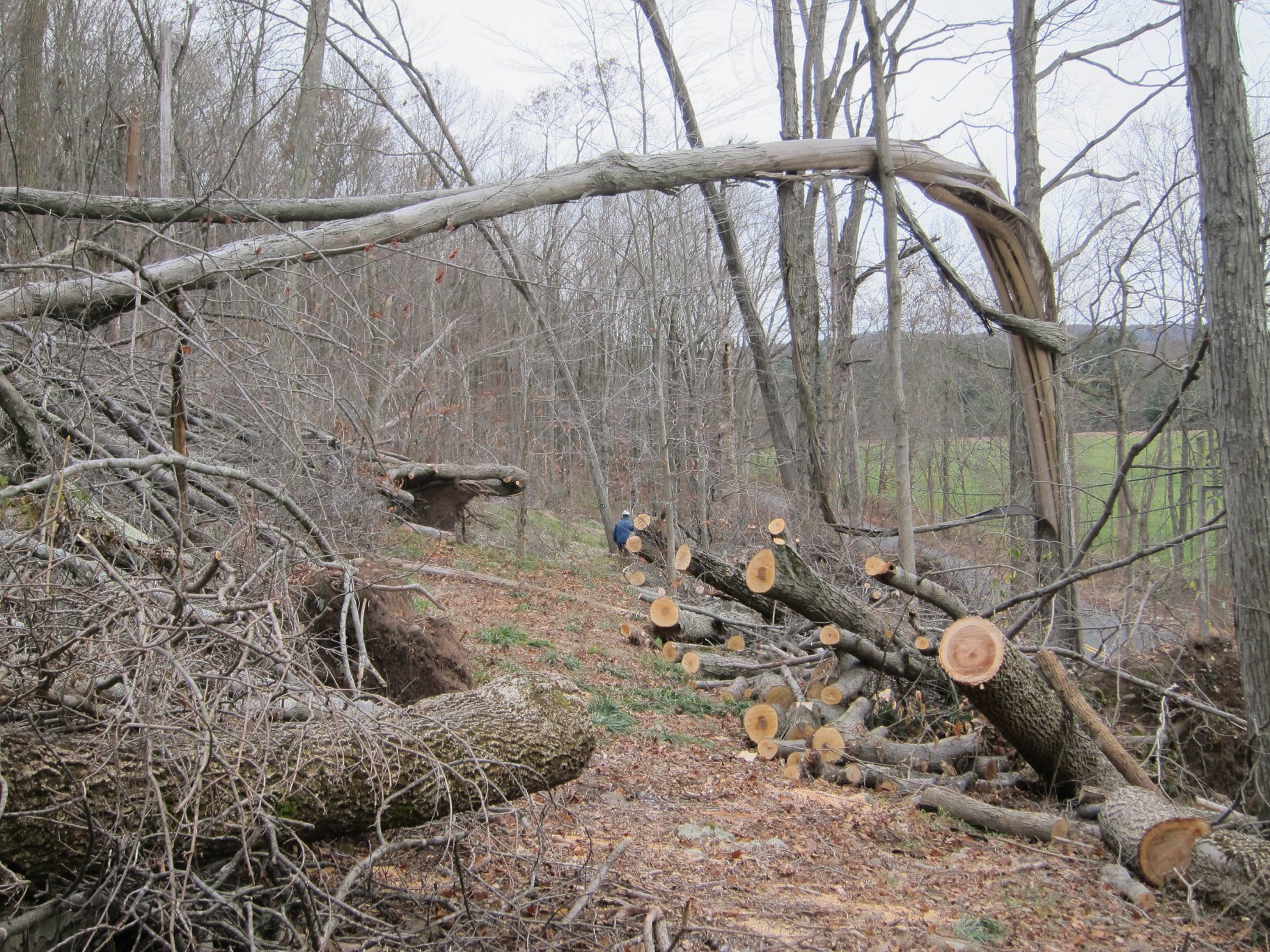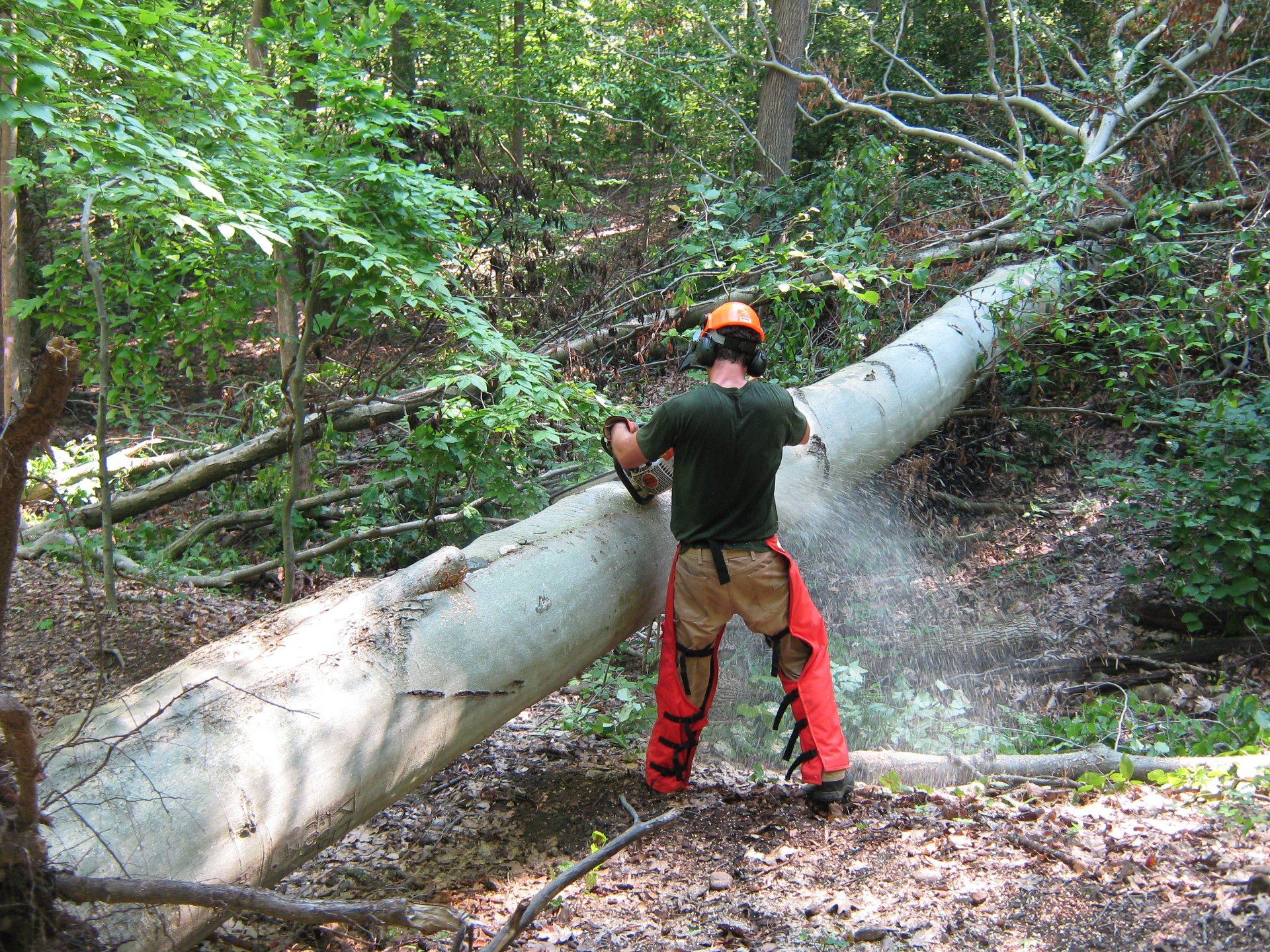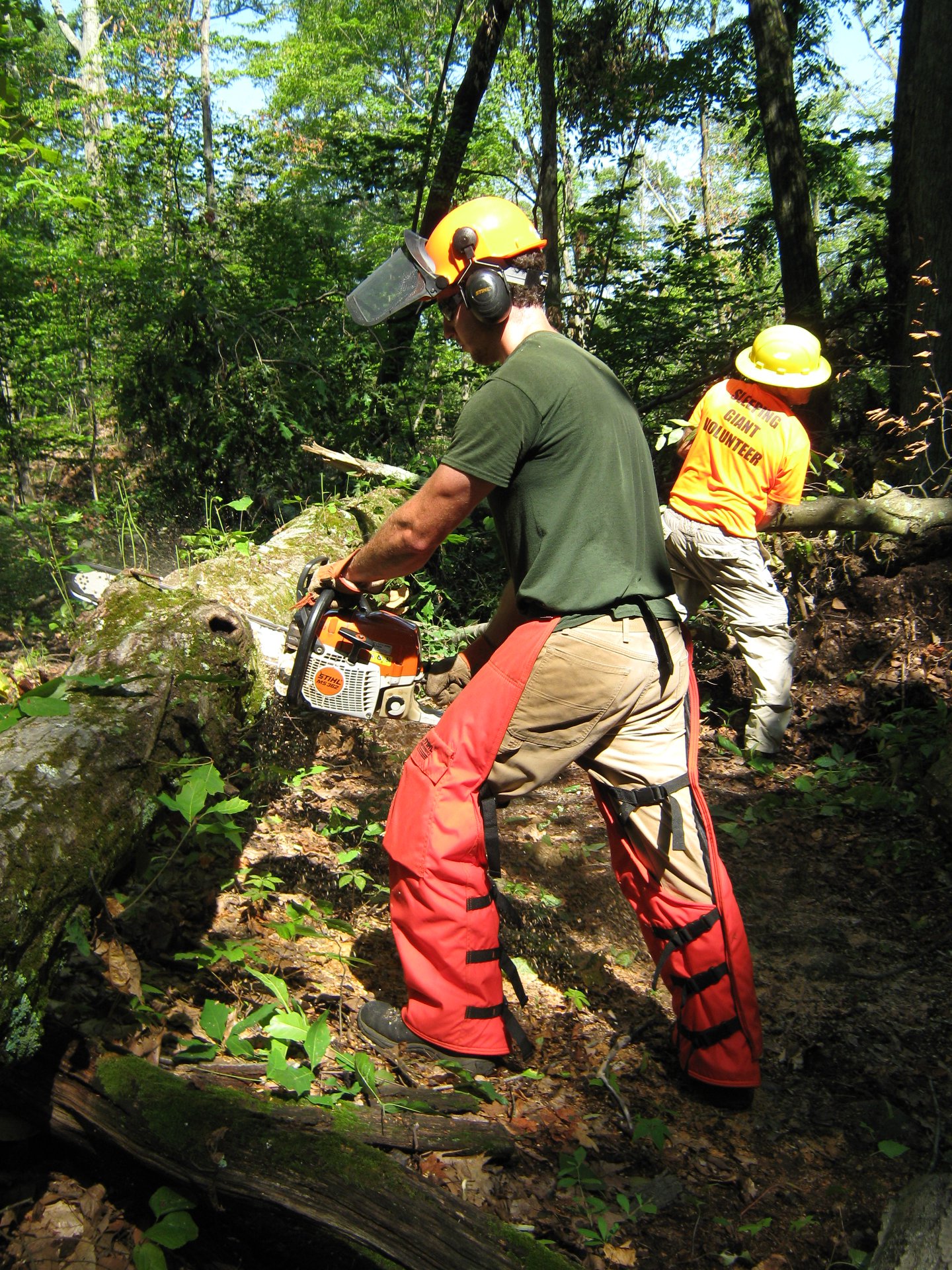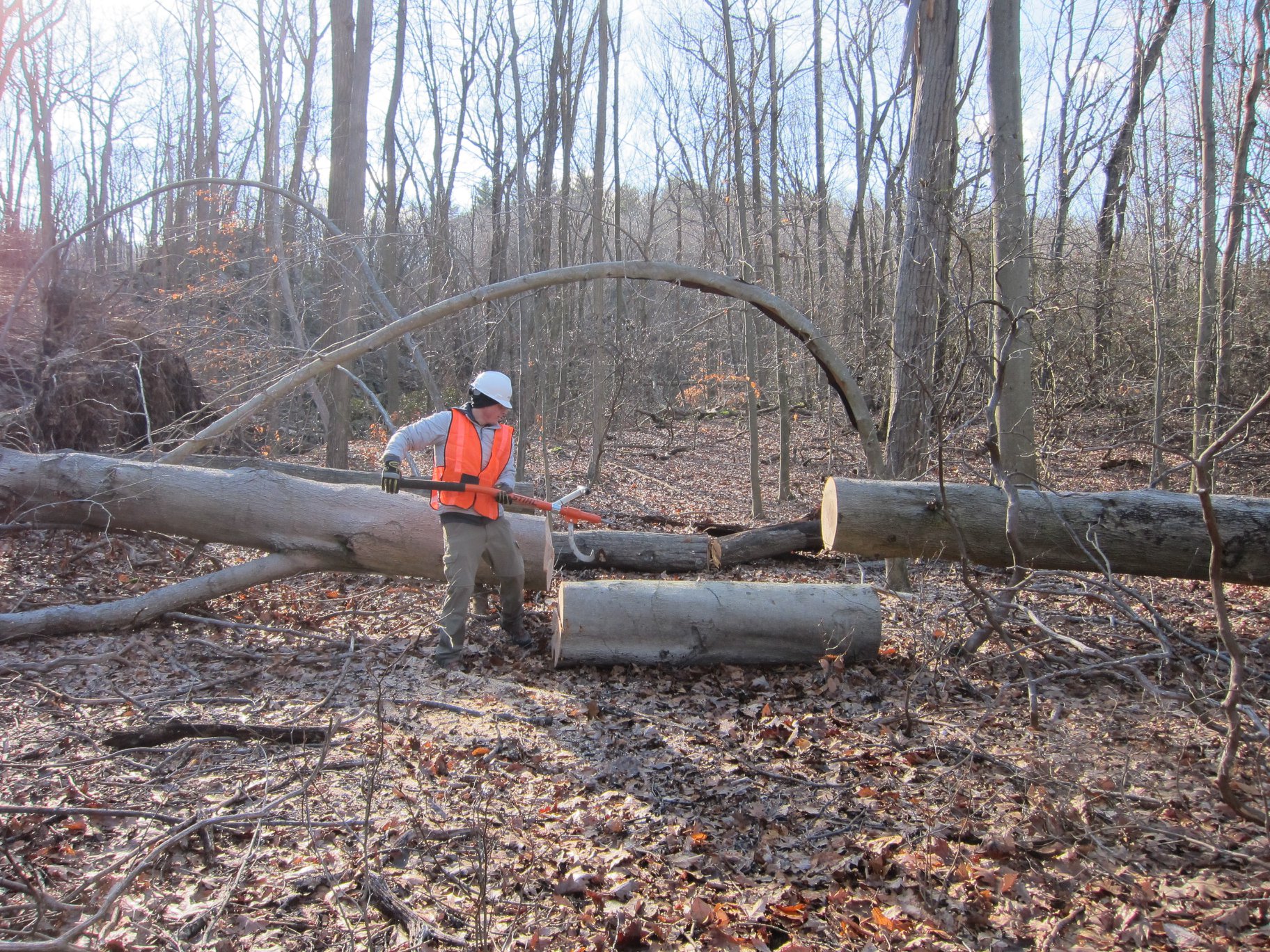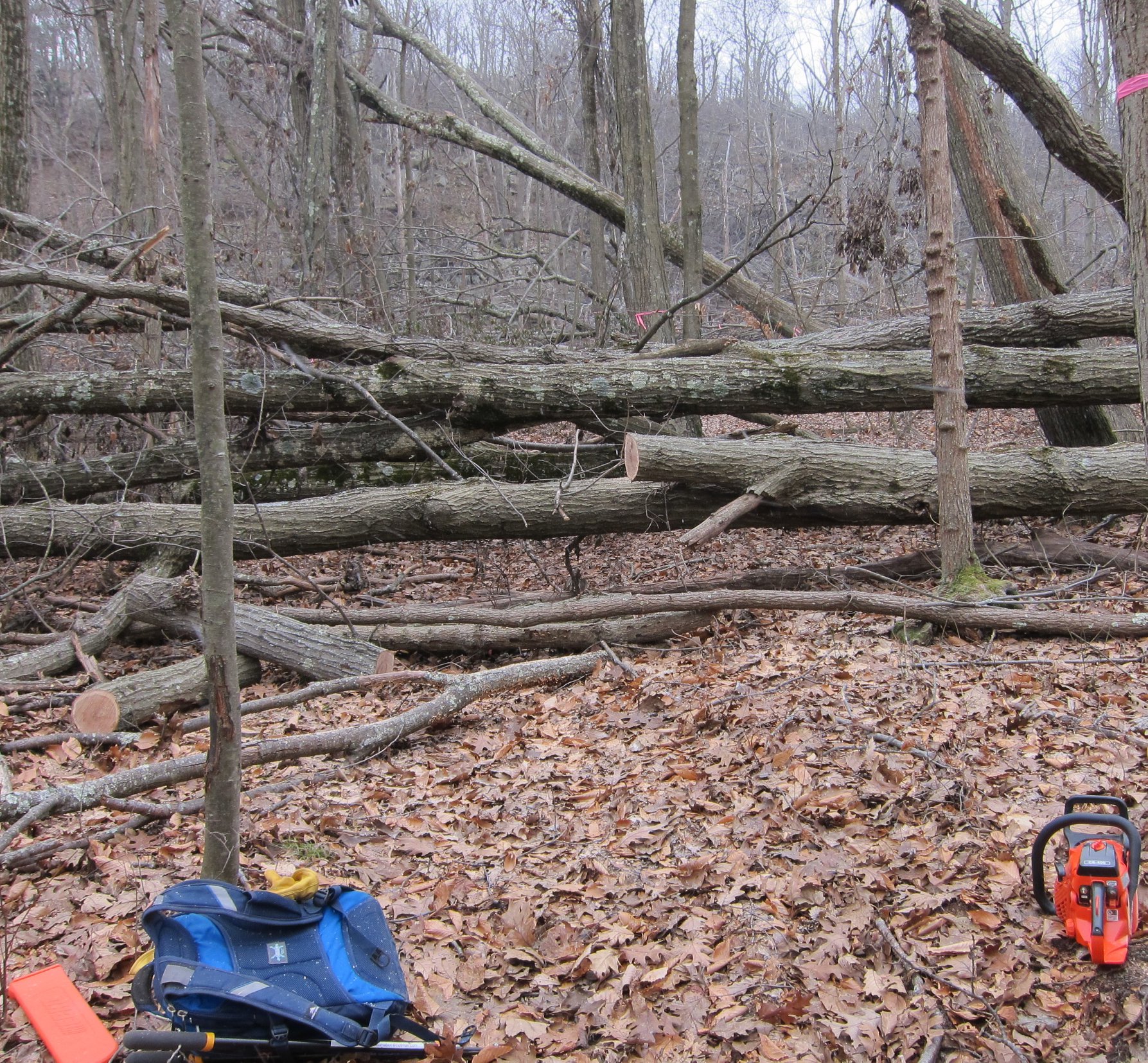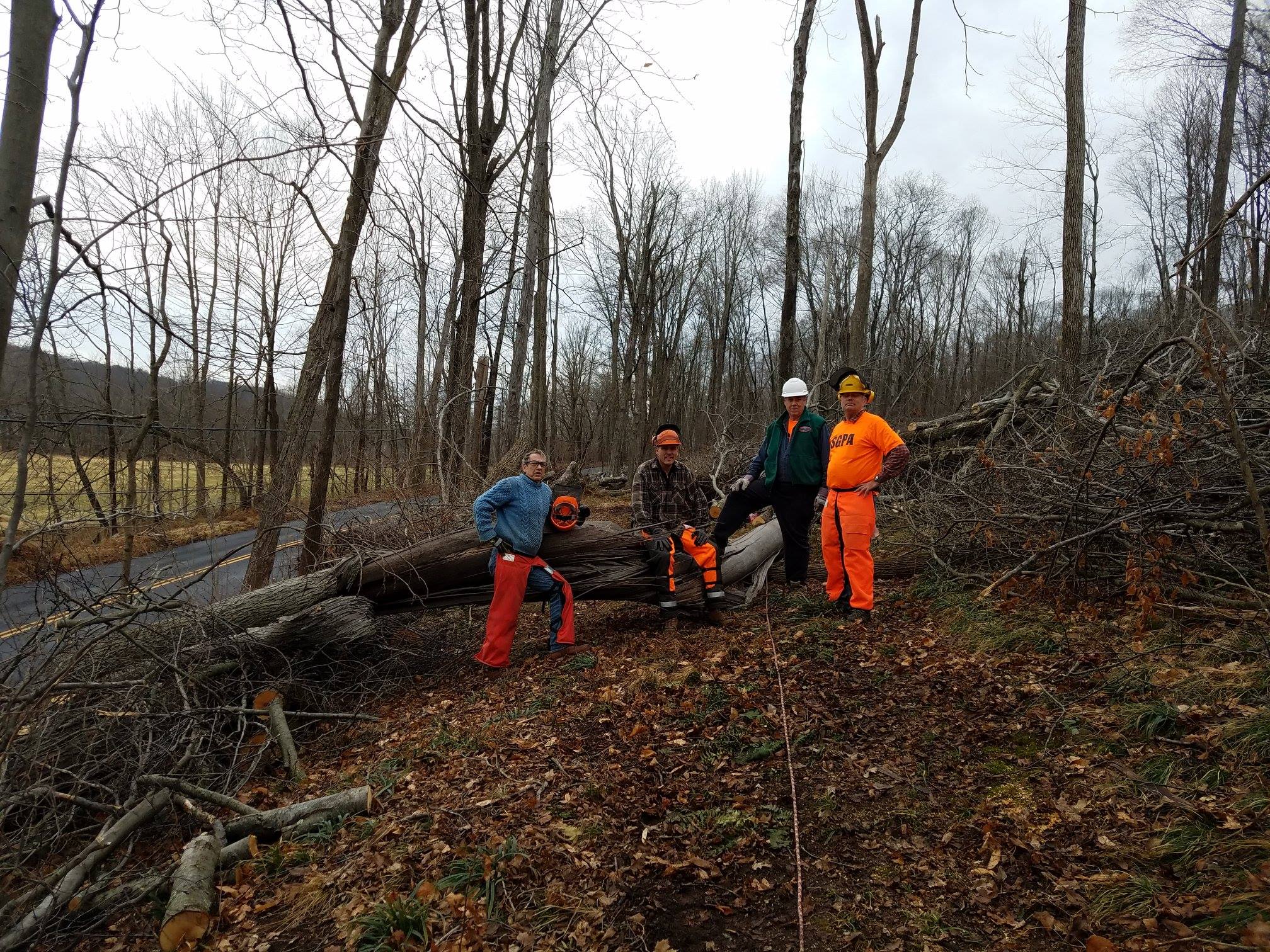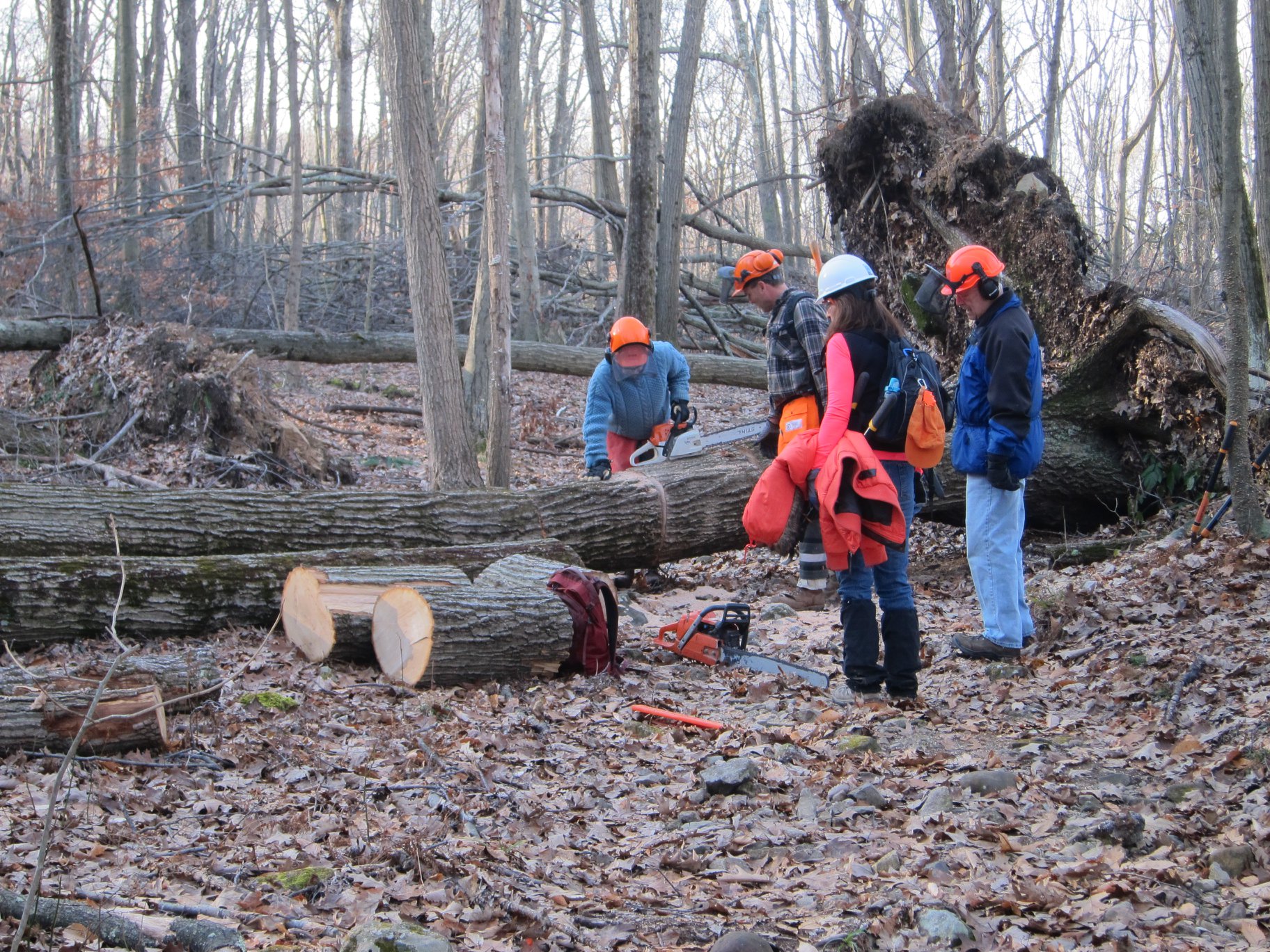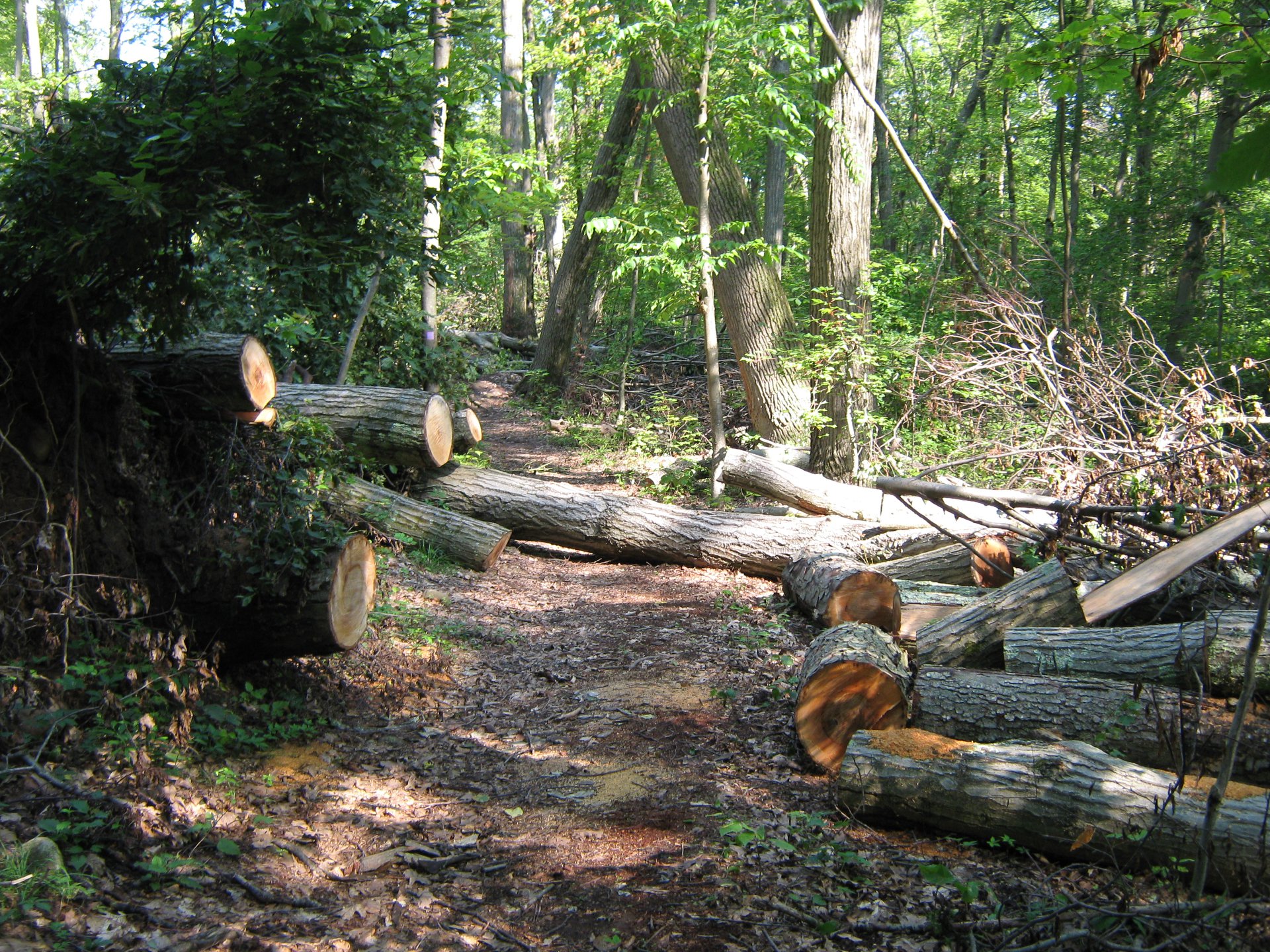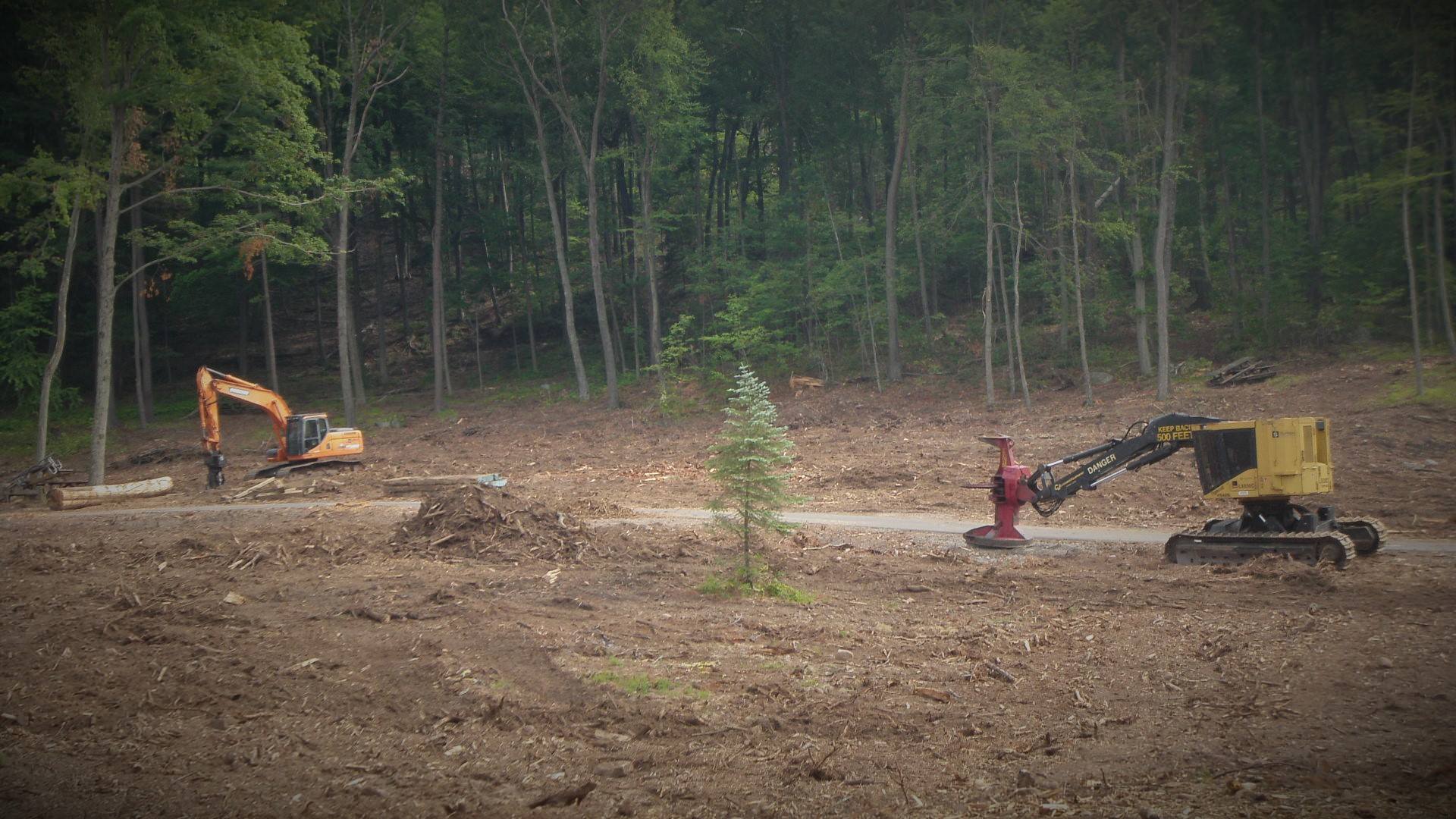The 2018 Tornado
Just after 5pm on May 15, 2018 a tornado collided with the Sleeping Giant. Winds of more than 100mph blew down thousands of trees and damaged countless others. The park was immediately closed. Damage was so severe that cleanup efforts lasted 13 months, until the park reopened on June 14, 2019.
During the cleanup period, SGPA worked in close coordination with the State of Connecticut. Thousands of hours were volunteered through SGPA’s trail crew to clear downed trees, reroute trails, and repair trail infrastructure. Today, recovery efforts continue.
Image courtesy of Hailey Wilson
Read more about her harrowing experience, HERE>>
The Tornado’s Damage
Anyone who had spent time at the park prior to the tornado, would have thought the resulting damage unimaginable. In the iconic pine grove at the park’s picnic area, nearly every one of the hundreds of mature pine trees were snapped in half or toppled by the winds. Across the Mill River, the park’s other pine grove experienced the same fate. Tree tops and branches were piled like pick-up sticks, with snapped trunks serving as a reminder of what once was.
“You heard a lot of wind. You couldn’t really see anything. I got out to the park I was like wow…where did the park go?”
— Jill Scheibenpflug, Park Supervisor
Further up the Giant, the devastation was equally severe. Thousands of trees fell onto the 32 miles of trails, and entire patches of forest on the park’s north side were blown over. Trails were nearly impassible, and hanging branches (aka widow-makers) threatened to fall from above.
To the east, a separate microburst (a sudden downdraft of tornado-like winds) leveled trees across a multi-acre swath at the southern trailhead of the Red Circle Trail.
Click arrows to navigate through the gallery.
Images courtesy of Darren, NBC CT. More HERE >>
Cleanup Efforts
Following the tornado and the park’s closure, efforts began to assess the extent of the damage and formulate a plan for recovery. In just a few short weeks, crews got to work.
Cleanup began with professional loggers removing the fallen and damaged pine trees near the picnic area. Even with appropriate equipment, the mess of fallen trees made the work challenging. Salvageable logs were set aside to be sent to the mill while branches and tops were chipped. Once the picnic area was cleared, the contractors moved on to the fallen pines across Mill River, constructing a temporary river crossing to gain access. Efforts then moved to the tower path, where fallen oaks and maples were again cleared by professionals with heavy equipment.
Back in the picnic area, a brush hog chipped any remaining debris into the ground, and the soil was leveled and re-seeded with grass. The park entrance had changed drastically, and was almost unrecognizable.
Click arrows to navigate through the gallery.
Images courtesy of Darren, NBC CT. More HERE >>
SGPA’s Trail Crew to the Rescue
While the State and its contractors worked on the above-described projects, SGPA’s trail crew began work clearing fallen trees from the 32-mile backcountry trail network. Groups, comprised of 1-2 sawyers, plus another 2-4 helpers, fanned out across the trails.
In all, more than 2000 trees were cleared from the trails. Some were simpler, needing only a segment of the trunk to be cut out to allow hikers to pass. Others were more complicated, requiring entire tree crowns to be cut and hauled out of the way. When confronted with leaning trees or widow-makers winches and technical cuts with the chainsaw were employed. In limited instances, trails were even rerouted due to the immense amount of material that would otherwise have to be moved.
Re-opening the trails was a herculean effort. Dozens of dedicated volunteers contributed thousands of volunteer hours. The Trail Crew worked through the heat of summer and cold of winter, steadily progressing through each segment of each trail in the park.
Click arrows to navigate through the gallery.
Images courtesy of SGPA.
Recovery & Regrowth
While the tornado left a path of devastation in its wake, it is important to understand that Connecticut’s forests are resilient and have withstood similar disturbances for millennia. Where forests once stood, we now see swaths of early successional habitat, replete with flowering and fruiting plants that provide abundant food for birds and other wildlife. This patchwork of habitat helps to support greater biodiversity on the Giant, and over time, will revert back to mature forest.
With recovery efforts underway, opportunities were also identified to leave the park better than it was before the tornado. The tower path, for example, was significantly improved to prevent future erosion and layered with a fresh covering of gravel.
The Giant itself also provides a glimpses of hope. Remaining in the picnic area was a single blue spruce, which was later honored by the Hamden Tree Commission on September 24, 2018 as a “Notable Tree” (read the official notice HERE). It remains a sign of regrowth and recovery.
Remaining blue spruce – a Hamden Notable Tree.
Image courtesy of Julie Hulten.
Ongoing Restoration
While the park was reopened in June of 2019, work has continued to restore the landscape and make continued improvements as this work is done.
SGPA has planted dozens of native trees and shrubs in the picnic area, and plans are underway to start introducing native plants to the former pine grove across the Mill River. Disturbed areas are also monitored on a regular basis, and when identified, invasive species are removed to promote the resurgence of native habitats.
Additional plans are underway to reconfigure the picnic and parking areas, construct a visitor’s center, expand the pollinator garden, and more.
